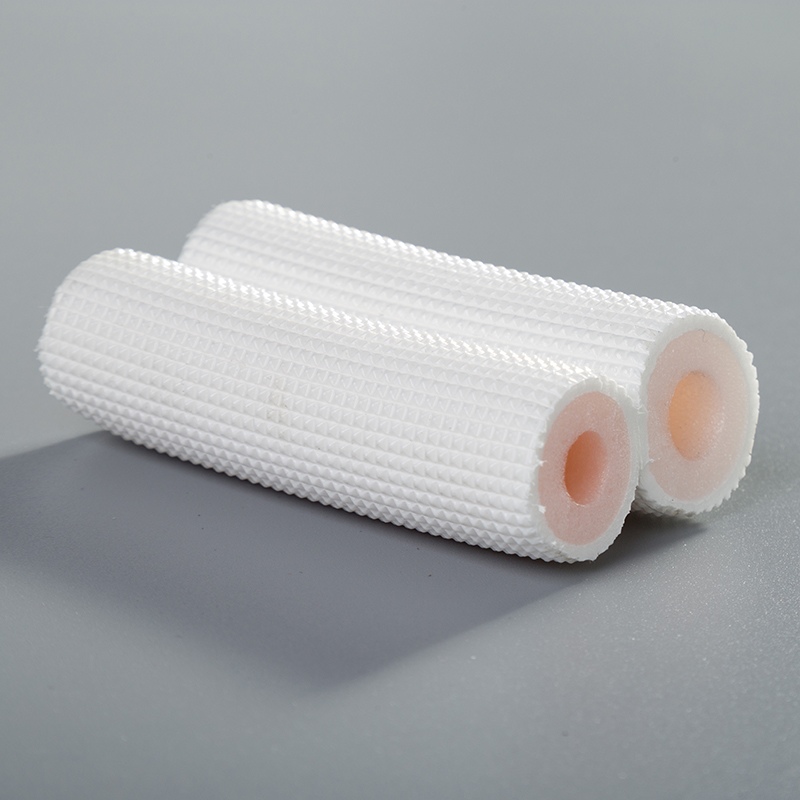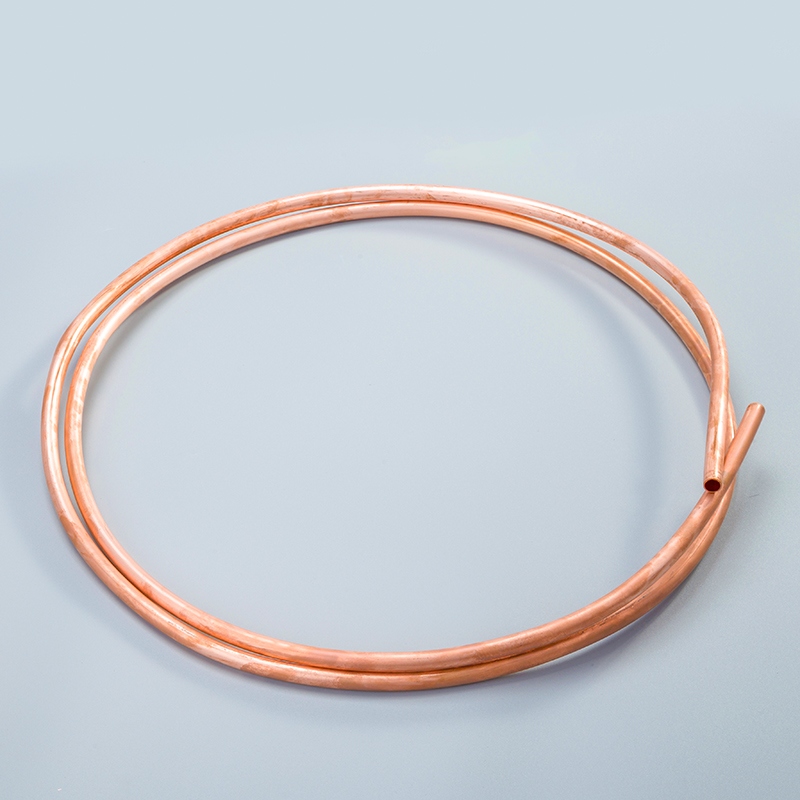Trends in Copper Pipe Usage in HVAC Systems 2024-2032

Trends in copper pipe usage in HVAC systems
Copper pipes play a pivotal role in HVAC systems, ensuring efficient heat transfer and durability. As readers delve into this blog, they can expect an insightful exploration of current market trends, advantages of copper piping, and future innovations in the HVAC industry from 2024 to 2032. Understanding these trends is crucial for industry professionals to stay ahead in an ever-evolving market landscape.
Current Market Trends and Statistics
In the realm of copper pipes in HVAC systems, the market showcases diverse dimensions that shape its landscape. Let's delve into the distinct aspects that define the current market trends and statistics.
Market Size and Growth Rate
The global market size of copper pipes in HVAC systems reflects a dynamic environment where innovation thrives.
Projected growth rates from 2024 to 2032 indicate a promising trajectory for the industry, hinting at significant advancements on the horizon.
Regional Market Analysis
North America stands as a key player in embracing copper pipes for HVAC systems, setting benchmarks for efficiency and reliability.
In Europe, the utilization of copper pipes in HVAC applications underscores a commitment to quality and sustainability.
The Asia-Pacific region showcases a burgeoning interest in adopting copper pipes, aligning with global standards of excellence.
Key Market Players
Leading manufacturers are pivotal in driving innovation and setting industry standards for excellence.
Market share distribution among key players highlights a competitive landscape where each entity contributes uniquely to the sector's growth.
Advantages of Using Copper Pipes in HVAC Systems

Thermal Conductivity
Efficiency in heat transfer
Copper pipes excel in facilitating efficient heat transfer within HVAC systems, ensuring optimal performance and energy efficiency.
The superior thermal conductivity of copper enables quick and effective heat exchange, enhancing the overall functionality of HVAC units.
This efficiency translates to cost savings for consumers, as copper's properties reduce energy consumption and enhance system performance.
Comparison with other materials
When compared to alternative materials, copper pipes stand out for their unmatched thermal conductivity, making them a preferred choice in HVAC applications.
Unlike other materials that may compromise on heat transfer efficiency, copper ensures consistent and reliable performance throughout the system's lifespan.
The utilization of copper pipes guarantees a seamless operation of HVAC systems, providing durability and longevity essential for sustained performance.
Corrosion Resistance
Longevity and maintenance benefits
Copper's inherent corrosion resistance properties contribute to the longevity of HVAC systems, minimizing maintenance requirements and operational disruptions.
By withstanding harsh environmental conditions without degradation, copper pipes offer a durable solution that reduces the need for frequent repairs or replacements.
The long-term cost-effectiveness of copper piping is evident through its minimal maintenance needs, ensuring uninterrupted functionality over extended periods.
Case studies of long-term usage
Various industry studies have highlighted the extensive use of copper pipes in HVAC applications due to their proven track record of reliability and longevity.
Case studies demonstrate how copper piping maintains its structural integrity over time, showcasing resilience against corrosion and wear under demanding operating conditions.
The long-term success stories associated with copper pipes underscore their indispensable role in ensuring the sustained efficiency and performance of HVAC systems.
Durability
Strength and reliability
The durability of copper pipes is unmatched in HVAC systems, offering robustness that withstands varying pressures and temperatures without compromising performance.
With exceptional strength characteristics, copper piping ensures structural integrity under challenging conditions, guaranteeing reliable operation throughout its lifecycle.
The reliability of copper pipes translates to enhanced system stability, reducing the risk of failures or inefficiencies that could impact overall HVAC performance.
Impact on system lifespan
Incorporating copper pipes into HVAC systems significantly extends their lifespan by providing a durable infrastructure that resists degradation over time.
The longevity offered by copper piping directly influences the overall lifespan of HVAC units, contributing to sustained operational efficiency and reduced replacement costs.
By enhancing system durability and resilience, copper pipes play a pivotal role in maximizing the longevity and effectiveness of HVAC systems.
Future Trends and Innovations (2024-2032)

Technological Advancements
New manufacturing techniques
Innovative approaches in manufacturing processes for copper pipes and tubes are revolutionizing the HVAC industry. Manufacturers are implementing cutting-edge methods to enhance production efficiency and product quality. These advancements not only streamline manufacturing operations but also elevate the performance standards of copper piping systems, meeting the evolving demands of the market.
Integration with smart HVAC systems
The integration of copper pipes into smart HVAC systems marks a significant leap towards enhanced energy efficiency and operational intelligence. By seamlessly incorporating copper piping technology with smart controls and monitoring systems, HVAC units can optimize performance, reduce energy consumption, and improve overall system reliability. This synergy between traditional craftsmanship and modern technology paves the way for a new era of intelligent HVAC solutions.
Environmental Considerations
Sustainability and recycling
The emphasis on sustainability in copper pipe production aligns with global environmental initiatives, driving manufacturers to adopt eco-friendly practices. From sourcing raw materials responsibly to implementing recycling programs, the industry is committed to reducing its carbon footprint. By promoting sustainable practices throughout the supply chain, copper pipe manufacturers contribute to a greener future while maintaining product integrity and performance excellence.
Regulatory impacts
Regulatory frameworks play a pivotal role in shaping the future landscape of copper pipes in HVAC systems. Compliance with stringent regulations ensures product safety, quality assurance, and environmental responsibility within the industry. Manufacturers must navigate evolving regulatory landscapes effectively to uphold industry standards, promote consumer confidence, and drive continuous improvement in product development and implementation.
Market Dynamics
Emerging markets
As emerging economies embrace technological advancements in HVAC infrastructure, the demand for high-quality copper pipes continues to rise. These burgeoning markets present lucrative opportunities for manufacturers to expand their global footprint and cater to diverse consumer needs. By strategically entering emerging markets with innovative products and tailored solutions, industry players can capitalize on growing demand trends and establish strong market presence.
Shifts in consumer preferences
Consumer preferences are evolving towards sustainable, energy-efficient solutions in HVAC applications, influencing the adoption of copper pipes over conventional alternatives. The shift towards environmentally conscious choices underscores a growing awareness of long-term benefits associated with copper piping systems. By aligning product offerings with changing consumer preferences, manufacturers can position themselves as leaders in providing reliable, efficient, and eco-friendly solutions for modern HVAC requirements.
The escalating demand for copper pipes and tubes in HVAC systems reflects the industry's shift towards energy-efficient solutions.
Market growth projections indicate a promising future, with a compound annual growth rate of 15% expected.
Copper's versatility extends beyond HVAC to plumbing, refrigeration, and industrial applications, showcasing its widespread utility.
Embracing copper piping not only ensures optimal heat exchange but also underscores a commitment to sustainability and cost-effectiveness.
Staying informed about industry trends is paramount for professionals seeking to navigate the evolving landscape of HVAC systems effectively.
See Also
Revealing Future Trends in Copper Tube Production for Air Conditioning
Exploring the Development of Copper Pipes in Air Conditioning
Key Factors in the Copper Pipe Revolution for Air Conditioning
The Impact of Pure Copper Pipes on Air Conditioning
Revealing the Influence of Copper Tubing in Air Conditioning Units

